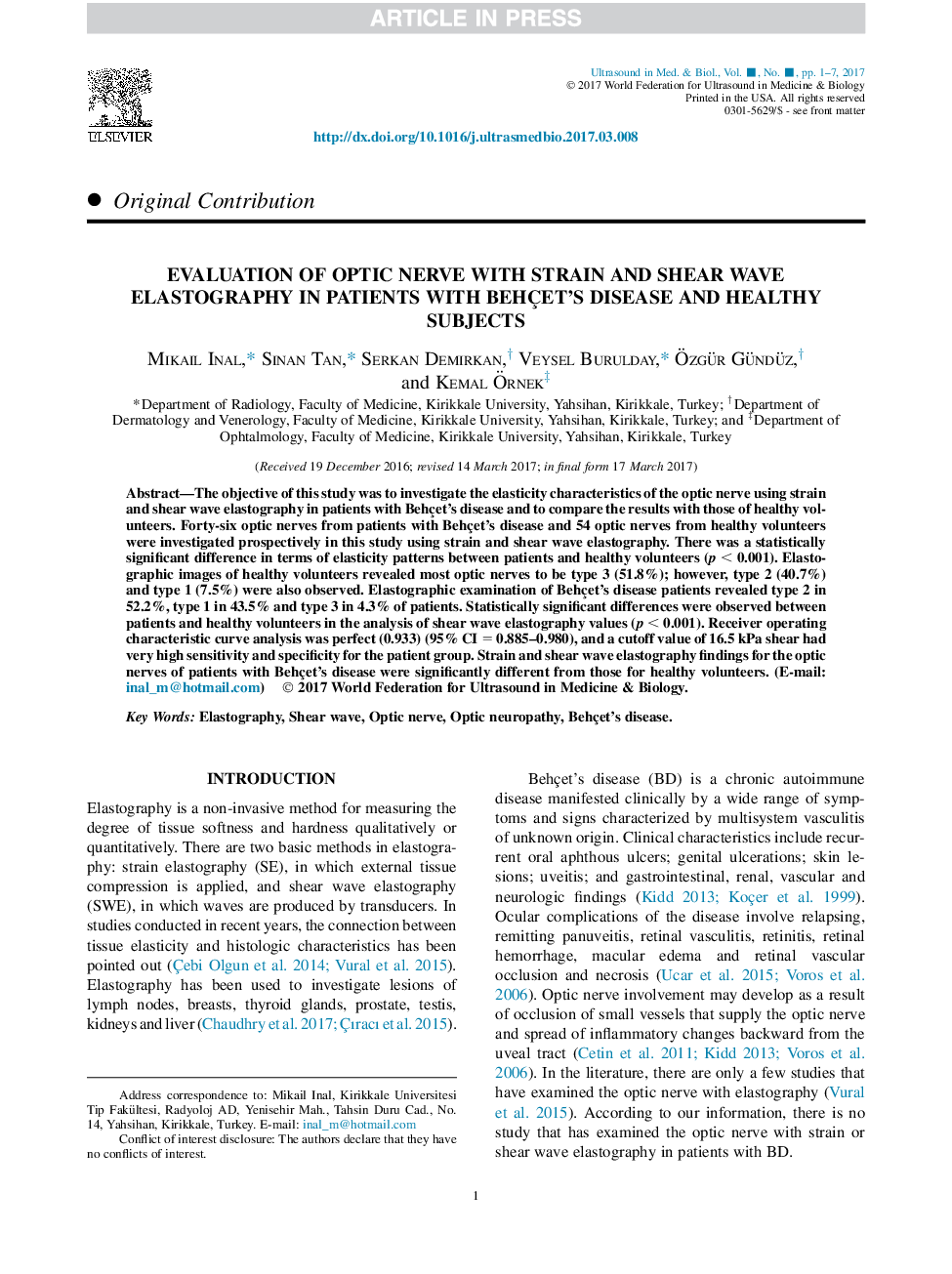| Article ID | Journal | Published Year | Pages | File Type |
|---|---|---|---|---|
| 5485640 | Ultrasound in Medicine & Biology | 2017 | 7 Pages |
Abstract
The objective of this study was to investigate the elasticity characteristics of the optic nerve using strain and shear wave elastography in patients with Behçet's disease and to compare the results with those of healthy volunteers. Forty-six optic nerves from patients with Behçet's disease and 54 optic nerves from healthy volunteers were investigated prospectively in this study using strain and shear wave elastography. There was a statistically significant difference in terms of elasticity patterns between patients and healthy volunteers (p < 0.001). Elastographic images of healthy volunteers revealed most optic nerves to be type 3 (51.8%); however, type 2 (40.7%) and type 1 (7.5%) were also observed. Elastographic examination of Behçet's disease patients revealed type 2 in 52.2%, type 1 in 43.5% and type 3 in 4.3% of patients. Statistically significant differences were observed between patients and healthy volunteers in the analysis of shear wave elastography values (p < 0.001). Receiver operating characteristic curve analysis was perfect (0.933) (95% CI = 0.885-0.980), and a cutoff value of 16.5 kPa shear had very high sensitivity and specificity for the patient group. Strain and shear wave elastography findings for the optic nerves of patients with Behçet's disease were significantly different from those for healthy volunteers.
Related Topics
Physical Sciences and Engineering
Physics and Astronomy
Acoustics and Ultrasonics
Authors
Mikail Inal, Sinan Tan, Serkan Demirkan, Veysel Burulday, Ãzgür Gündüz, Kemal Ãrnek,
